Introduction
The Chief Financial Officer (CFO) is the cornerstone of any organization's financial health and strategic growth. Tasked with a broad array of responsibilities, the CFO oversees financial planning, budgeting, forecasting, cash flow management, and liquidity. This critical role involves developing and maintaining internal controls, risk management policies, and ensuring compliance with financial regulations.
By preparing and presenting accurate financial reports, the CFO provides the executive team and board of directors with essential insights for informed decision-making.
In an environment where nearly 98% of CFOs are delaying important strategic work due to low-value tasks, optimizing financial processes and systems becomes paramount. Effective financial management and planning are essential, requiring a meticulous analysis of market trends and a careful assessment of financial risks. The CFO's ability to leverage comprehensive financial data enables precise resource allocation, maintaining financial health and aligning with long-term goals.
Risk management and compliance are pivotal in today's complex business landscape, with CFOs implementing robust frameworks to navigate regulatory challenges. Access to real-time financial data is crucial, yet nearly 40% of global CFOs struggle with data trust, complicating strategic decisions. The CFO’s role extends to providing strategic insights, fostering a high-performance finance team, and managing stakeholder relationships to drive the organization toward sustained success.
Key Responsibilities of a CFO
The Chief Financial Officer (CFO) is essential to any entity's success, ensuring monetary stability and strategic growth. Key responsibilities include overseeing monetary planning, budgeting, and forecasting processes while managing cash flow and liquidity to support both day-to-day operations and future investments. A CFO must create and uphold strong internal controls and risk management policies to protect the organization's assets and ensure adherence to monetary regulations.
Precise and prompt reporting of finances is essential, with the CFO preparing and presenting monthly, quarterly, and annual statements to the executive team and board of directors. This role also involves working closely with external stakeholders, such as auditors, tax advisors, and banking institutions, to streamline monetary operations and uphold compliance standards.
Offering strategic monetary insights and recommendations is another essential aspect, assisting the executive team in making informed choices regarding resource allocation and long-term planning. Guiding the finance team, the CFO cultivates a culture of high performance, collaboration, and ongoing enhancement, ensuring that the team is well-prepared to navigate the changing monetary environment. 'This leadership is essential, particularly noting that 55% of finance leaders indicate a lack of clarity regarding the business plan required for effective organizational direction.'.
In a setting where almost all CFOs (98%) are postponing crucial strategic efforts because of low-value tasks, an emphasis on enhancing monetary processes and systems is vital. This approach helps reduce administrative burdens, allowing CFOs to prioritize long-term growth initiatives and revenue increase strategies. By staying informed about industry trends, market conditions, and regulatory changes, the CFO can navigate the complexities of the economic environment, steering the entity towards sustained success.
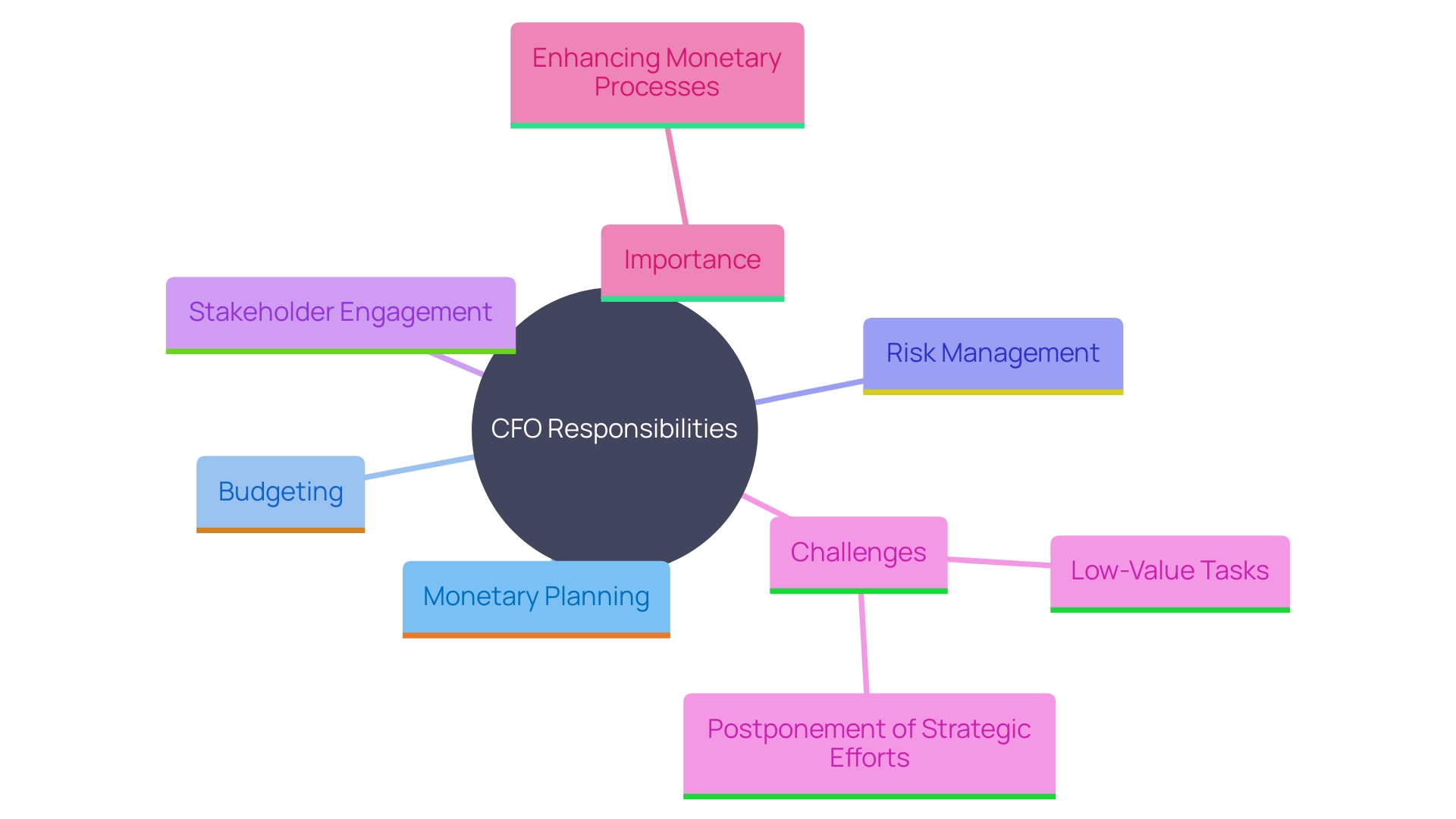
Financial Management and Planning
Efficient resource management and planning are the cornerstones of a company's success. The CFO creates detailed monetary plans that serve as a strategic blueprint for meeting the organization's goals. This involves a meticulous analysis of market trends, evaluation of investment opportunities, and a careful assessment of monetary risks. Staying updated on industry trends and regulatory changes is vital. For instance, the recent IRS inflation adjustments for 2024 will significantly impact monetary planning and tax strategies.
By leveraging comprehensive economic data, the CFO can pinpoint areas ripe for cost efficiency and revenue growth. This keen insight enables the organization to allocate resources with precision, ensuring both liquidity and strategic deployment. Regular cash flow evaluations, incorporating anticipated inflows from various revenue sources and outflows for operational costs, are essential in maintaining economic health and preventing the need for short-term borrowing. Such proactive monetary stewardship not only meets immediate operational needs but also aligns with long-term fiscal goals.
Investments Digest Newsletter underscores the importance of staying informed about economic developments and regulatory updates, which directly influence investment and portfolio management strategies. The Bureau of Labor Statistics' recent report on the consumer price index, showing a rise of 3.1% from the previous year, exemplifies the kind of economic indicators that CFOs must monitor closely. This level of attentive resource management and strategic planning ensures that entities are well-positioned to navigate market dynamics and capitalize on emerging opportunities.
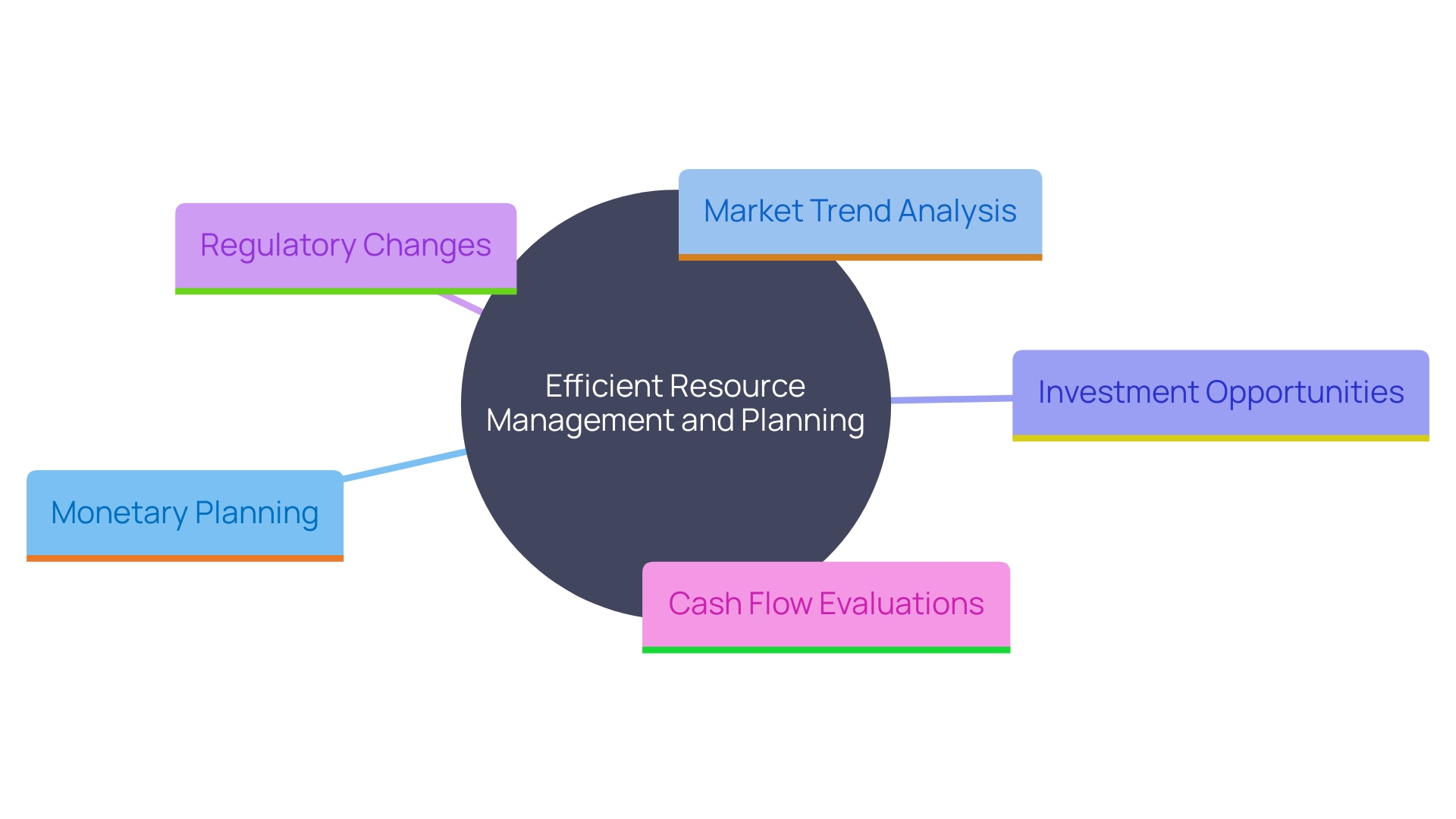
Risk Management and Compliance
In today’s complex business environment, risk management and compliance are pivotal to a CFO's responsibilities. Financial services face an unprecedented level of regulations from multiple regulatory bodies, including district, state, national, and industry agencies. This is exacerbated by the diverse array of digital communication channels, making compliance a daunting task. To illustrate, Wall Street firms have already incurred over $2.5 billion in fines due to compliance failures, with more expected as enforcement intensifies.
The CFO must implement robust risk management frameworks to navigate these challenges effectively. According to the Committee of Sponsoring Organizations of the Treadway Commission (COSO), an enterprise risk management (ERM) framework integrates culture, capabilities, and practices to manage risks, thus safeguarding organizational value. This proactive method not only protects the entity from monetary pitfalls but also enhances its reputation among stakeholders.
Furthermore, the ability to access and analyze monetary data in real-time is crucial. Regardless of this, almost 40% of worldwide CFOs do not entirely trust their entity's fiscal data, making strategic decision-making more complex. Tackling these concerns through efficient risk management and adherence approaches is crucial for sustaining economic stability and operational effectiveness.
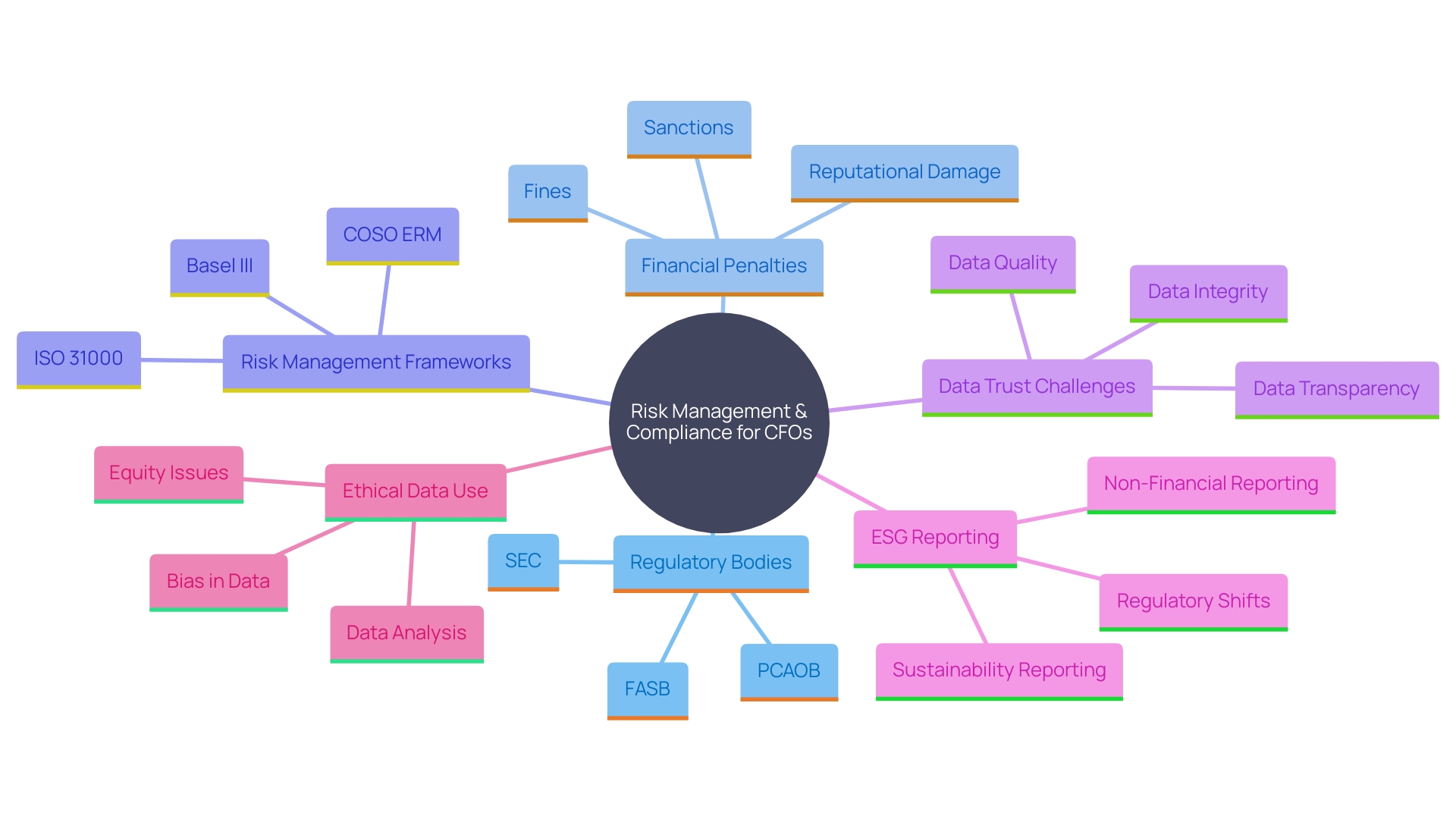
Strategic Decision-Making and Communication
The CFO plays a pivotal role in guiding a company towards its strategic objectives by offering essential monetary insights. By carefully examining economic data and market conditions, the CFO assists in developing business plans that promote growth and improve profitability. Effective communication with other executives, the board of directors, and external stakeholders is essential, ensuring that monetary matters are comprehensively understood and aligned with the organization's broader objectives. As emphasized by Tricia Tolivar, CFO at Cava, 'Today's financial leaders are responsible for steering organization-wide planning, focused on the long-term success of the business.' This underscores the CFO's evolving role as a key strategic partner within the C-suite, actively collaborating to identify new value-creation opportunities and deploy resources effectively. 'Despite the strategic importance of their role, a recent survey reveals that 55% of finance leaders feel they lack visibility into the basic business plan necessary for providing robust, organization-wide guidance, often because they are bogged down by low-value tasks.'.
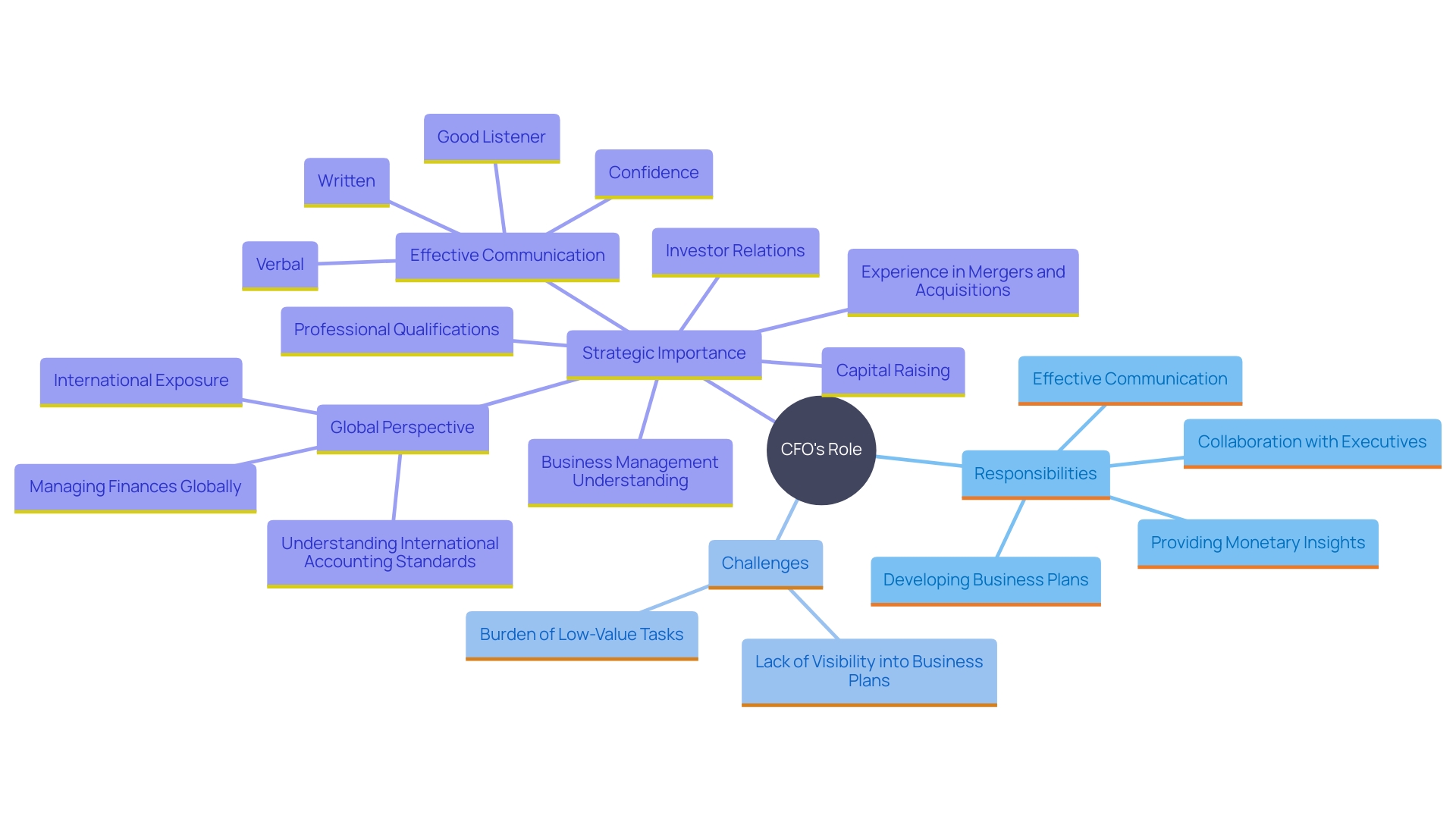
Building a Strong Finance Team
A strong finance team is vital for the successful execution of the CFO’s mandate. This responsibility entails not only recruiting top-tier talent but also fostering their development and retention. Creating a collaborative environment where team members can leverage their expertise is crucial. Jared Weitz of United Capital Source Inc. emphasizes that finance partners should embed themselves into the business, understanding its operations to provide valuable insights that drive decision-making.
Investing in team development and leveraging technology can significantly enhance capabilities. According to a survey, while 60% of finance leaders feel confident in short-term decision-making, a substantial 55% lack visibility into the necessary business strategy for long-term guidance. This emphasizes the significance of providing finance teams with the appropriate tools and training to navigate complex monetary landscapes.
Moreover, reducing organizational complexity is key to maintaining positive momentum. TBC Bank's agile transformation journey underscores this, showing that despite adopting modern structures, the persistence of operational dependencies and technical debt hindered expected benefits. Consequently, a finance team skilled in streamlined processes and agile principles can better assist the CFO in attaining economic stability and growth.
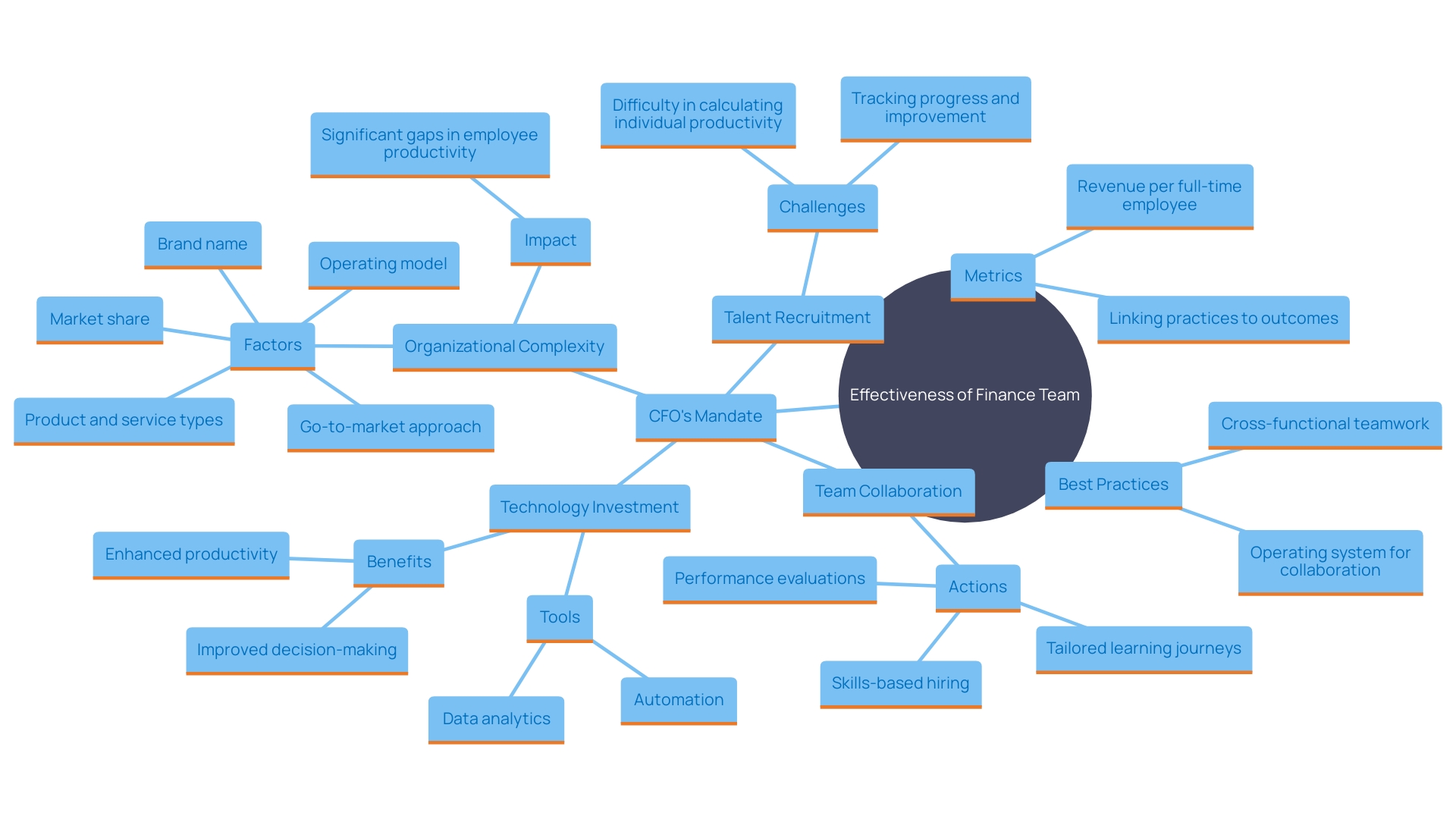
Stakeholder Management and Investor Relations
Managing relationships with stakeholders, particularly investors, is a paramount function of the CFO. Efficient communication, openness, and trust development are crucial to represent the organization’s financial performance, approach, and future prospects accurately. Given the diverse types of investors—ranging from institutional investors like pension funds with a long-term perspective to hedge funds focused on short-term gains—it is crucial to customize communication methods accordingly.
Institutional investors, such as BlackRock and Vanguard, increasingly incorporate ESG (Environmental, Social, and Governance) factors into their investment strategies, emphasizing sustainable practices. On the other hand, short-term investors may prioritize immediate financial returns, often opposing initiatives perceived to increase costs.
By actively engaging with these diverse investor groups, the CFO can enhance the entity’s credibility and garner support for strategic initiatives. This approach not only aligns with current trends, as highlighted by reports from sources like The Economist and The CEO Magazine, but also ensures that the organization remains agile and responsive to varying investor expectations and market conditions.
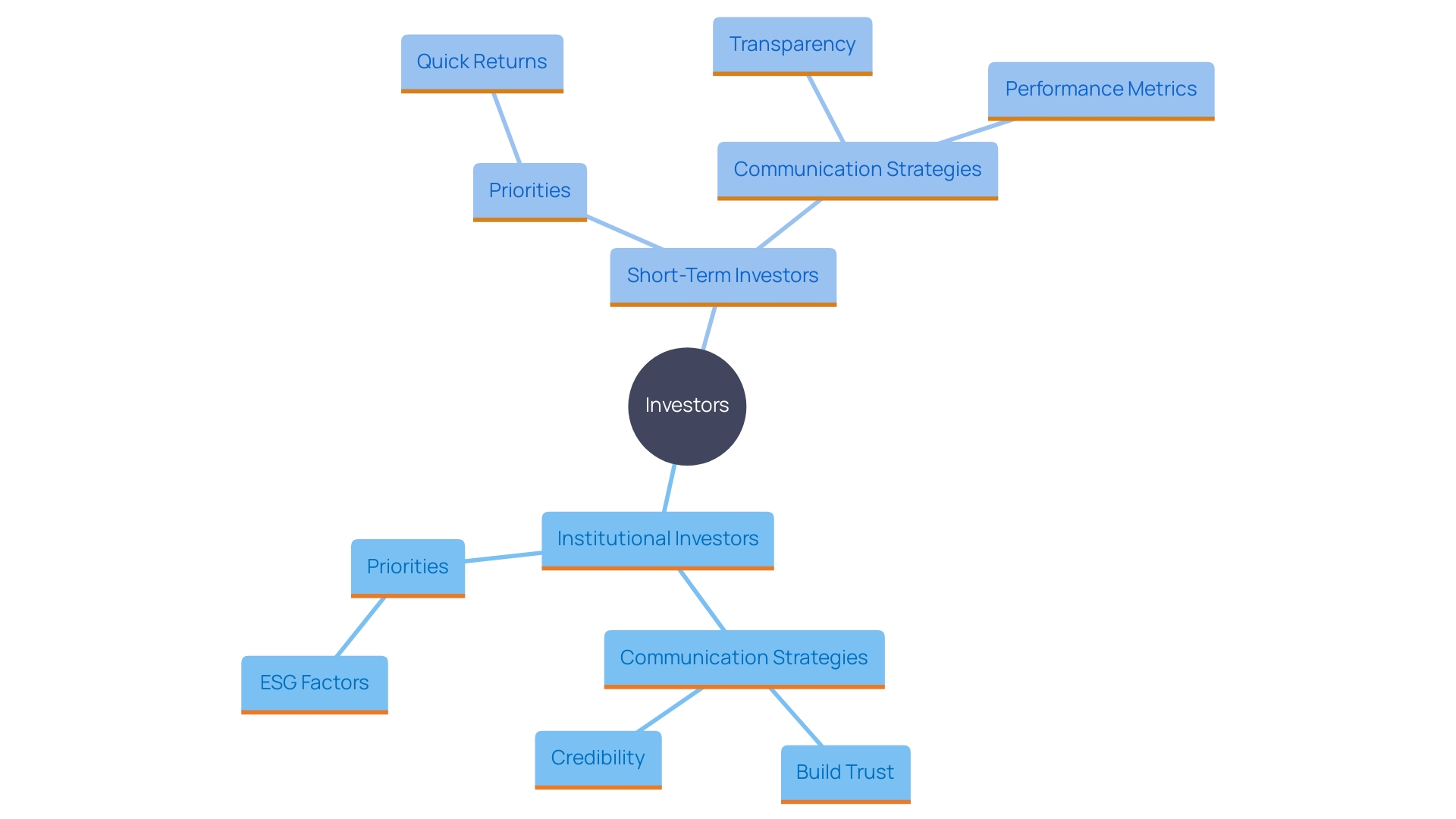
Conclusion
The multifaceted role of the Chief Financial Officer is critical for organizational success, encompassing responsibilities that range from financial planning and risk management to strategic decision-making and stakeholder engagement. A CFO's ability to oversee financial operations and provide accurate reporting is essential for informed decision-making at the executive level. By optimizing financial processes, CFOs can alleviate the burdens of low-value tasks and focus on driving long-term growth initiatives.
Effective financial management and planning are indispensable for navigating market dynamics and capitalizing on emerging opportunities. Through meticulous analysis of financial data and industry trends, the CFO can identify areas for cost efficiency and revenue growth. This proactive approach not only supports immediate operational needs but also aligns resources with long-term strategic goals, ensuring financial health and stability.
Risk management and compliance have become increasingly complex in today's regulatory landscape. Implementing robust frameworks allows CFOs to safeguard organizational assets and maintain trust in financial data. This vigilance is crucial in fostering a culture of transparency and accountability, which in turn enhances stakeholder confidence and supports sustainable growth.
Moreover, the CFO's leadership in building a strong finance team is vital for executing the organization's financial strategy. Investing in talent development and leveraging technology can significantly enhance team capabilities, thereby enabling the organization to navigate the complexities of the financial environment more effectively.
In summary, the role of the CFO is evolving into that of a strategic partner, driving enterprise-wide initiatives and fostering collaboration across departments. By embracing this comprehensive approach, CFOs can position their organizations for sustained success in a dynamic business landscape.




